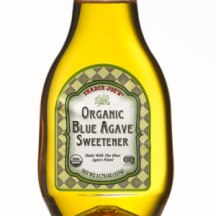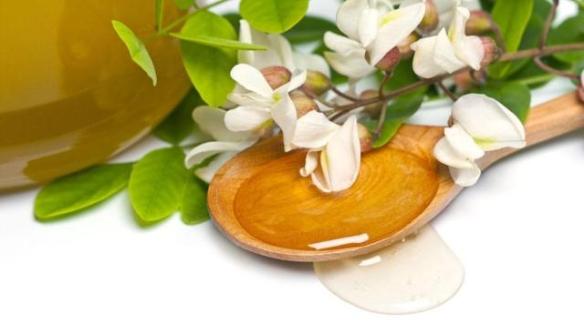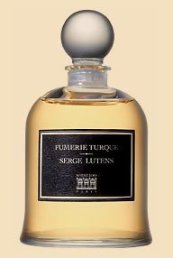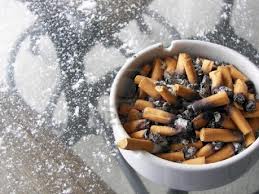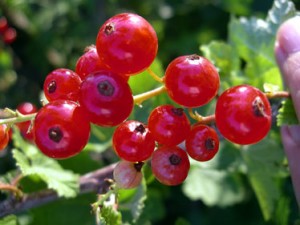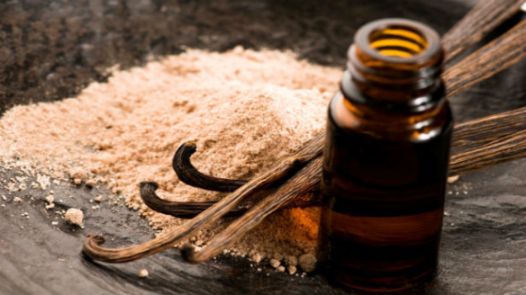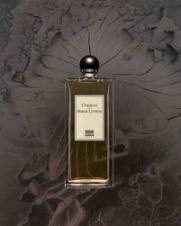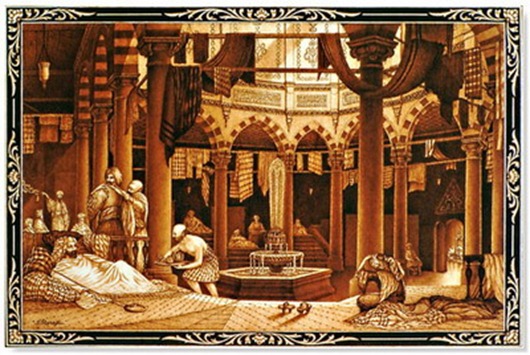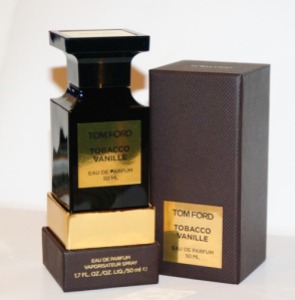While in Paris, I had the chance to sniff fragrances from Phaedon, the Paris niche perfume house founded in 2011 by Pierre Guillaume (who also owns Parfumerie Generale and is behind Huitieme Art). The line previously had seven eau de toilettes, but, this summer, Mr. Guillaume launched seven more fragrances that are all “High Concentration Eaux de Parfums.” The new creations were all made by Pierre Guillaume in collaboration with various perfumers.
I obtained samples of three of the fragrances, thanks to the kindness of the Paris niche boutique, Sens Unique, a fantastic store which I will rave about in another post one day. The perfumes in question are: Tabac Rouge (Turkish Blend), Rouge Avignon, and Pure Azure. For reasons that will soon become clear, I’ve decided not to follow my usual course of doing a lengthy, comprehensive review for each fragrance individually. Instead, I’ll merely provide a brief synopsis and my impressions for all three perfumes in a single post.
TABAC ROUGE:
Phaedon describes Tabac Rouge (Turkish Blend) as follows:
Turkish Blend is a quintessentially Art Deco composition. Turkish tobacco absolute and incense make up the core accord, spare, dry and perfectly balanced. As in Tamara de Lempicka’s paintings, the “color” palette is pared-down and vibrant: ginger, cinnamon and a lick of honey. In the base notes, musks, bolstered by warm, powdery Siam benzoin, blend the scent with your skin. Androgynous, stylized and luxurious.
Fragrantica‘s list of notes, oddly enough, excludes the main ingredients in the scent which are Turkish tobacco absolute and incense. Adding those in, Tabac Rouge’s ingredients would include:
Turkish tobacco absolute, incense, ginger, cinnamon, honey, musk, powdery notes and benzoin.
Tabac Rouge is, in a nutshell, a simpler, slightly less forceful, lighter version of Tom Ford‘s Tobacco Vanille. The major differences to me are that the Phaedon version is fractionally less sweet than its cousin, lacks a fruited base, has weaker sillage, less density, and doesn’t quite take on the Yankee Candle Plum Pudding undertone of Tobacco Vanille.
Like Tobacco Vanille, Tabac Rouge starts with a strong blast of honeyed tobacco that is infused with incense and vanilla, and dusted with spices in a potent blend that eventually turns softer, airier, more powdered, and more vanillic in nature. The differences that exist are largely minute, and one of degree. As noted above, Tabac Rouge lacks a plum pudding undertone, but it also feels much more honeyed to me. In fact, the honey was much more pronounced on my skin than the vanilla which seemed less significant than in Tobacco Vanille. A much bigger difference is that Tabac Rouge feels much softer and lighter than the Tom Ford fragrance. It doesn’t have the latter’s dense, thick chewiness, but it does have its longevity.
In essence, it’s very sweet, it’s pretty, and it’s a much better deal than the Tom Ford fragrance at $160 for 100 ml, instead of $210 for a mere 50 ml. Nonetheless, it’s obviously treading water that’s been explored before, which is why I agree, to some extent, with Mark Behnke of CaFleureBon whose entire summation of Tabac Rouge amounted merely to this:
Tabac Rouge, travels a well-worn path of combining tobacco and incense. It is fine but it didn’t ever rise to a level of something I would be reaching for when I am in the mood for tobacco and incense. If you like these notes and want a lighter simpler take on them Tabac Rouge could fill the bill.
I like Tabac Rouge more than he did, but I too would get my incense and tobacco fix elsewhere.
ROUGE AVIGNON:
Phaedon describes Rouge Avignon as follows:
A Gothic composition, as opulent and dark as the shadow of the Papal Palace looming over nations and centuries… The carmine red of the papal stole is conjured with a fleshy, spicy rose facetted by ylang-ylang and raspberry. In the heart notes, waxed woods, cocoa bean, black truffle and earthy smoky vetiver lure us into the private apartments of the Supreme Pontiff. Gilt moldings and religious ornaments glint in the firelight while gray tendrils of smoke rise from a censer burning sandalwood chips mixed with musk and amber.
The succinct list of notes is:
raspberry, ylang-ylang, rose, cacao pod, hinoki wood, tuber [black truffle], vetiver, sandalwood, musk and amber.
Rouge Avignon opens on my skin with a bouquet of honeyed sweetness and delicate florals that soon turn into a fleshy, fruited, purple rose. A strong heaping of sharp, almost clean musk ensues, and deep down in the depths, there is a very noticeable dose of cocoa powder. The latter is soon overwhelmed by the syrupy, jammy rose, and doesn’t really appear again until a few hours later. I honestly don’t smell raspberry as the fruit, per se, in its own right but, instead, an amorphous, almost berry-like fruitiness.
Something about the overall combination and my skin chemistry has produced instead an accord very similar to a patchouli rose. It’s a profusion of abstract dark berries and syrupy sweetness, much like the purple patchouli I loathe so much. In fact, I’m reminded of Frederic Malle‘s Portrait of a Lady, only Rouge Avignon has a greater degree of musk that feels a little synthetic, along with extremely muted, minor hints of something dark in the base. I’m not the greatest fan of fruited, syrupy, patchouli-like roses, and I don’t like Portrait of a Lady, so I confess that I’m equally underwhelmed here.
I was surprised to see that Mark Behnke of CaFleureBon also struggled with the forceful combination. On him, the fruited element definitely seemed like raspberry in its own right, as opposed to some amorphously red-purple fruit syrup, but he still wasn’t fond of the overall effect:
I really enjoyed the foodie heart of Rouge Avignon but I must confess the strength of the rose and raspberry in the top notes took some getting used to. I think I will revisit this in the chill of the fall.
By the standards of CaFleureBon with their positive, laudatory take on everything, that simple confession speaks volumes. As for the issue of seasons, it’s almost December here, and I’d like Mr. Behnke to know that Rouge Avignon is still a painfully sweet, berried rose from start to finish.
There are only a few minor changes in the fragrance’s primary backbone and theme. After a few hours, a subtle touch of sweetened powder emerges, as does a slightly earthy, murky, brown funk with a faint undertone of cocoa. On my skin, it’s never the “foodie heart” that Mr. Behnke talks about, at least not in any dominant or substantial way. Still, there is some minor darkness deep down in the base, and that turns Rouge Avignon from a scent that begins as Portrait of a Lady into something closer to Tom Ford‘s Noir de Noir. Rouge Avignon is lighter, airier, thinner, and more synthetic in feel than both those fragrances, and it also lacks Noir de Noir’s powdered violet nuance, but the similarities struck me repeatedly nonetheless.
At the end of the day, I simply don’t find the sum-total of Rouge Avignon to be all that interesting. Actually, I grew to hate it quite intensely. The rose is painfully, almost torturously sweet for my tastes, and the perfume feels wholly unoriginal. The list of notes is fantastic, but the reality on my skin is primarily of a very fruited rose with sharp, very synthetic musk, and only a modicum of a dark, earthy heart. However, if you’re looking for something in the general vein or family of Portrait of a Lady, but much lighter and airier, then you should consider Rouge Avignon. It is a much better bargain at $160 (or €120) for a large 100 ml bottle, than Portrait of a Lady which costs $340 for that same sized bottle. The same goes for Noir de Noir which Tom Ford sells for $210 for 50 ml. Rouge Avignon has moderate sillage, turns into a skin scent after four hours, but has good longevity.
PURE AZURE:
The description and advert for Pure Azure are meant to transport you to Mykonos in summer:
This giddy balancing act of a scent carries us high above the cliffs of the Aegean Sea, where azure skies contrast with the blinding whiteness of fishermen’s villages… The fragrance of fig trees and orange blossom, the warmth of vanilla and spices, the sensuousness of jasmine rise from the shores of the Mediterranean. In the base notes, the mouth-watering warmth of tonka bean is brought out by a delicately salty note. A “Mediterranean Oriental” hovering between the radiant and the animal….
The succinct list of notes is:
fig, orange blossom, vanilla, spicy notes, jasmine, tonka bean and salt.
Pure Azure opens with an explosion of whiteness that is both clean and verging on the florid. There is orange blossom, tinged with hints of a more bitter, woody, spicy neroli, and then a big burst of saltiness that is truly wonderful. It’s a visual landscape of white with orange blossoms that are languid, sweet, indolic, utterly lush, and, yet, also fresh. There is spiciness and a definite sense of greenness underlying those orange blossoms, but it is the initial sprinkling of saltiness that really captured my interest.

Unripe Figs via Giverecipe.com. (For recipe on Unripe Fig Jam, click on photo. Link embedded within.)
Unfortunately, it soon fades, but it is replaced by an interesting fig note. Like the orange blossoms, the fruit is simultaneously sweet, fresh, and green. There is none of the leathery darkness that figs can sometimes take on. Instead, there is an almost milky quality that evokes a slightly unripe fruit in late Spring, before the summer heat has turned it fleshy, dark, and gooey. Deep down in Pure Azure’s base, there are touches of vanilla, but it’s never custardy, heavy, or rich.
Pure Azure has a beautiful medley of notes, but what is initially so great about it is the paradoxical mix of freshness and lushness. The orange blossoms have hints of lush, heavy, indolic ripeness, but not quite. It’s as though the sweet flowers are almost green, with a dewy, light feel that truly feels fresh.
The scent is crisp (though not like a cologne), feels very summery, and most definitely meets Phaedon’s goal of recreating the Mediterranean coast. (I actually saw Capri more than an Aegean island, but let’s not quibble about lovely places where fresh flowers bloom in the warm, salty air.) The best way I can describe Pure Azure’s feel in my mind is to refer to a crisp white shirt worn against a man’s tanned skin (à la Kilian Hennessey), instead of the more common or traditional visual associated with indolic white flowers, namely, languid courtesans reclining with ripe, white flesh and heaving bosoms.
On the negative side, however, Pure Azure’s opening has an undertone of soapiness, as well as an increasingly strong blast of white, clean musk that, unfortunately, feels very synthetic. Both elements help underscore the fresh crispness of Pure Azure’s opening, but I would have been happier without the splitting headache that the musk gave me for a few hours. Despite that, I generally liked Pure Azure’s opening stage because of the green touch to the flowers and fruit.
The freshness doesn’t last long. About 75 minutes in, Pure Azure turns into a simple, honeyed floral, as the jasmine emerges and the white musk recedes to lurk underneath. The jasmine soon becomes fully integrated into the orange blossoms, and both are completely drenched in sweetness. The honey is not heavy syrup, however, but more like agave nectar which is both sweeter and lighter. Despite the lack of density, it’s very potent, transforming even that clean, laundry, white musk into something warmer.
Pure Azure soon turns rather abstract, feeling like a soft cloud of blowsy, ripe, white florals, with heavy honey, a dollop of musk, and the faintest smidgen of salt. It’s like a floral cousin to Mona di Orio‘s Eau Absolute, only lighter, airier, and without citric elements. In its final moments on my skin, Pure Azure is a nebulous smear of honeyed sweetness with just a vague hint of something floral behind it. I like honey, which my skin tends to amplify, but I have to admit, I was taken aback by how quickly and by how much it dominated Pure Azure. I know it’s probably my skin’s fault, but it was all too much for me by the end. Too linear, too simple, too boring.
At this point, I have to bring up Mark Behnke’s review again, because Pure Azure is where we part ways a little. He loved it, finding it his favorite of the new Phaedon line. I’m less enamoured. His review reads as follows:
My favorite of the new collection was a surprise to me as with a name like Pure Azure I was expecting a variation on an aquatic theme. Instead I was treated to a fantastic summer floral which appealed to me on many levels. Fig and orange blossom open Pure Azure on a bright accord. Vanilla and jasmine turn things sweeter and deeper. Tonka and a bit of a marine accord cut the sweet without making it go away. For almost the entire time I wore Pure Azure I was in the midst of a grove of fig trees, orange trees and jasmine swirling in and out of each other. I ended up wearing this on a day the thermometer hit 100 and it was perfect for that kind of heat. It wasn’t cloying or too much it was just right.
Pure Azure was significantly less interesting on my skin than on his, but I can see why he liked it so much. I smelled pretty much all of them at Sens Unique, and Pure Azure captured my interest the most at first sniff. Nonetheless, my feelings are highly qualified because I struggle with the potency of the clean, fresh synthetics, as well as with the way Pure Azure veers so sharply to the other extreme of warm, almost indolic sweetness. I also wish Pure Azure had a more complex evolution than mere honeyed florals in its later stage.
ALL IN ALL:
My problem with the new Phaedon line isn’t that many of them seem derivative, but, rather, with their extreme sweetness. Pierre Guillaume is a chap known for having a very gourmand touch with his Parfumerie Generale fragrances, and the Phaedon line doesn’t seem to be an exception. It’s simply too, too much for my personal tastes.
I also struggled with the synthetic feel to some of his fragrances. During one test for Rouge Avignon, I became completely exhausted by the deluge of syrup and roses, and tried to scrub it off. “Tried” should be the operative word here. It took me over an hour to get most of it off my skin, using everything from rubbing alcohol (3 times), nail varnish remover (2 times), soap, dishwashing liquid (2 times), and Tide laundry detergent (2 times). Even after all that, I still could smell lingering traces of that damn fruited rose on parts of my arm later that evening. Only something with definite synthetics in the base will be that impervious to cleaning agents. (As a side note, a few of the fragrances I sniffed at the store had ISO E Super, an aromachemical that Pierre Guillaume loves to use in his Parfumerie Generale line.)
The synthetics may also help explain why the line has such good longevity on my perfume-consuming skin. The Phaedon fragrances consistently lasted over 11 hours, with some tests almost approaching 13 hours, depending on quantity. The sillage was potent at first, and the fragrances very forceful, but they are all uniformly airy in feel, lack density, and turn into something that is generally quite soft. On average, it took between 4 and 4.5 hours for them to become skin scents, though they were usually easy to detect up close.
Judging by what I’ve sniffed as a whole and tested in specific, I think the Phaedon line is generally pleasant, and good value for those who want a more affordable, lighter, softer cousin to some existing fragrances on the market. They’re not my personal cup of tea, but I can see the appeal.








